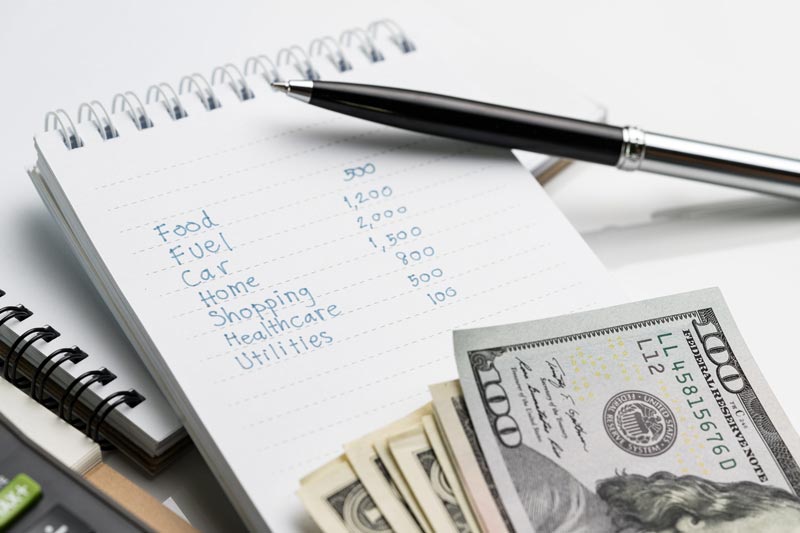FDIC-Insured - Backed by the full faith and credit of the U.S. Government
-
-
-
FNBO
Cashology®Jun 01 2021
-

Budgeting in the "New Normal"
When the COVID-19 pandemic began in early 2020, life as we knew it changed. Jobs were lost, travel was restricted, schools and businesses were forced to close, sports were cancelled, and many of us stayed home 24 hours a day. As a result, we spent less money on things like gas for our cars, eating out, weekly happy hours, and the latest fashions. Who needed new clothes when sweatpants were so comfortable?
For those who didn’t experience other financial hardships such as a job loss, this reduction in spending may have led to extra cash in their wallets. Some used the money extra to fund home improvement projects and online shopping splurges. But for others, the uncertainty of the pandemic was a great reason to put more money into savings. Regardless of the situation, the pandemic affected all our budgets in one way or another.
Fast forward 16 months and things are starting to look a little more “normal” again. We’re eating out more, traveling, going to sporting events, and buying new clothes to wear into the office. If this sudden increase in spending has your budget feeling out of whack, these simple tips will help get your budget back on track.
- Understand Your After-tax Income
It’s common practice to state your gross income when asked how much you make. When it comes to creating your budget, however, it’s important that you start with your after-tax income. Why? Because your actual take home pay can be significantly lower than your gross income once state, local and income taxes, as well as Medicare, Social Security, and any other benefit premiums are deducted from your paycheck.
Most people create monthly budgets because the majority of household expenses are paid on a monthly basis. To calculate your monthly after-tax income, simply take the after-tax amount on your check (the amount you are actually paid) and multiply it by the number of times you get paid each month. If your paycheck amount varies from check to check, you may want to calculate your monthly pay based on the average amount you make each check.
- Determine how much to allocate for needs.
Needs are crucial to your survival and/or living a comfortable life such as a home or apartment, electricity, running water, childcare, transportation, food, and medical care. It’s important to note that minimum payments on outstanding debts can also be considered a need because not paying them could harm your credit score and your future financial health.
Examples of budget items to consider as we transition to the “new normal” include; how much you will spend on gas now that you are driving to work again; how many days a week can you afford to eat out as opposed to making meals at home; and what do you need to set aside for childcare costs now that you aren’t working from home anymore?
- Set a savings goal.
As a general rule, you should have a minimum of three to six months of living expenses set aside in your emergency savings fund to cover the cost of unexpected events such as a job loss or illness. If don’t have enough set aside in your emergency savings fund, plan to set aside a certain amount each month until you reach your goal. After you’ve reached your emergency savings goal, you can continue saving for future events such as purchasing a new home or retirement.
Ways to increase your savings in the “new normal” include: allocating and unused money from recent Stimulus Checks or IRS Tax Refunds into your savings account to boost progress toward your savings goal; sell items you aren’t using anymore and put that money into savings; now that more businesses are open, find ways to boost your income in order to save more by working part time or starting a side gig.
- Determine how much you can spend on wants.
After deducting needs and savings from your after-tax income, you can spend the remaining money on wants. These are the things that you don’t need but enjoy. We get it - the pandemic has been tough, and it may be hard not to go overboard in treating yourself to meals out, going to the movies, and shopping in an actual store. You are totally right - but be careful not to spend too much and risk taking on unwanted debt.
Things to consider as we enter a “new normal” include: making lists before you go shopping to avoid overspending; keeping an eye out for deals or specials that might cost you less; and always waiting 24- to 48-hours before making a large or unplanned purchase so you are less likely to regret the purchase.
While your wallet may still be getting used to a new normal, the same old budgeting tricks still apply. If you have questions about your budget, a Personal Banker from FNBO would be happy to answer them. Give us a call today.
The articles in this blog are for informational purposes only and not intended to provide specific advice or recommendations. When making decisions about your financial situation, consult a financial professional for advice. Articles are not regularly updated, and information may become outdated.